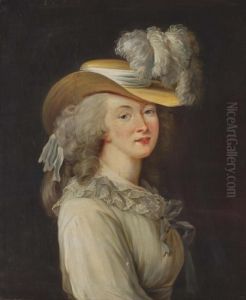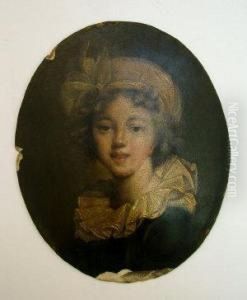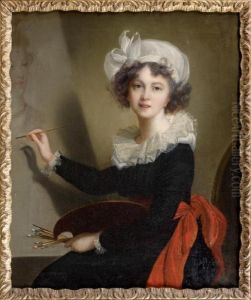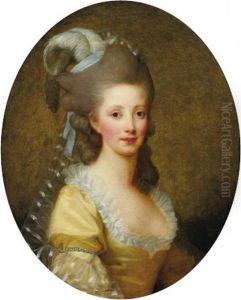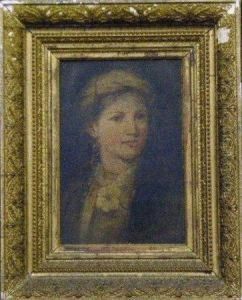Elisabeth Louise Vigree Lebrun Paintings
Élisabeth Louise Vigée Le Brun, also known as Madame Lebrun, was a prominent French painter born in Paris on April 16, 1755. Her father, Louis Vigée, was a portraitist and member of the prestigious Académie de Saint-Luc, which influenced her early interest in art. Unfortunately, she lost her father when she was just 12 years old, but her mother ensured that she received a good education, which included art lessons from various artists including Gabriel François Doyen and Jean-Baptiste Greuze.
Vigée Le Brun quickly developed her own style, with a particular talent for portraiture. Her early works gained recognition, and she was soon in demand among the French aristocracy. In 1776, she married art dealer Jean-Baptiste-Pierre Le Brun, which expanded her exposure to the art world and provided her with invaluable connections. Despite the advantageous aspects of this marriage, it was reported that her husband was financially irresponsible, which led to complications in their personal and financial lives.
Her career took a significant turn when she was summoned to Versailles in 1778 to paint a portrait of Queen Marie Antoinette. This led to a close relationship with the queen, and she became the official court painter. Vigée Le Brun created more than 30 portraits of Marie Antoinette, which helped to soften the queen's public image at a time when she was often the subject of criticism and negative propaganda.
The French Revolution, however, posed a threat to Vigée Le Brun, given her association with the monarchy. In 1789, she fled France with her young daughter, embarking on a long period of exile. She traveled across Europe, finding patrons among the nobility in Italy, Austria, Russia, and Germany, where her reputation as a leading portraitist continued to grow.
During her travels, Vigée Le Brun was accepted into various art academies, including those in Rome, Florence, and Saint Petersburg. Her work during this time continued to exhibit her exceptional skill in portraying her subjects with grace and liveliness, often using a lighter palette and softer brushstrokes that were typical of the Rococo style, which was giving way to Neoclassicism.
After 12 years abroad, Vigée Le Brun returned to France in 1802, during the reign of Napoleon Bonaparte. She continued to paint and exhibited her work with success. Her later years were also marked by her writing; she composed memoirs that provide valuable insights into the art and society of her time.
Vigée Le Brun's legacy includes more than 600 portraits and 200 landscapes, and her style is noted for its incorporation of Rococo and Neoclassical elements, with a particular emphasis on the natural portrayal of her subjects. She is considered one of the most important female painters of the 18th century. She passed away in Paris on March 30, 1842, leaving behind a rich body of work that is still celebrated today for its artistry and historical significance.
